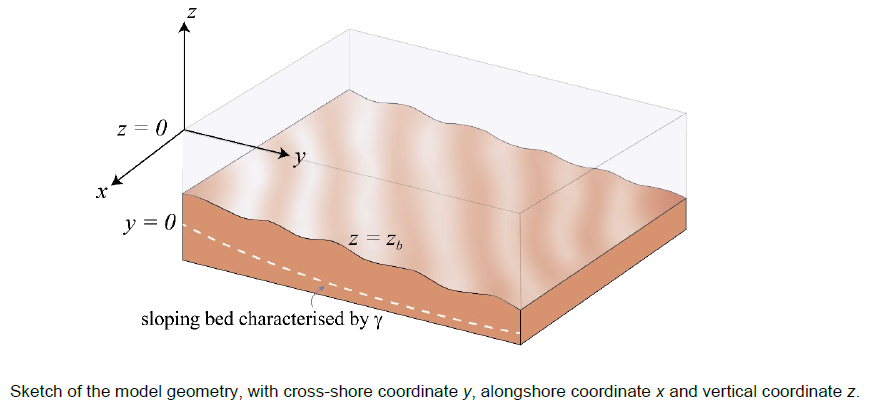Shelf seas are subject to storm and tide effects that affect the flow. Furthermore, the seabed topography interacts with the tide- and storm-driven flow and modifies it by, for example, the creation of higher harmonics and residual currents. This can lead to variations in sediment transport or orientation of the residual current (e.g., Hulscher, 1996; Calvete 2001).
We have developed a semi-analytical model that is able to solve the tide-driven flow over a shelf. The tidal forcing and shelf topography can be chosen by the user, but storm-driven effects are not yet implemented.

In this project you will study how the tide- and/or storm-driven flow interacts with the shelf topography and compare it against observations. Specifically, you will:
- add wind shear stress effects into the Matlab code in order to study how the tide- and/or storm-driven flow interacts with the shelf topography
- perform an extensive literature review (maybe including interviews with experts) to compare the model results with observations
- have a better understanding of flow-topography interactions
This project is part of the MELODY project (ModEling LOwer shoreface seabed DYnamics for a climate-proof coast). Every 6 months we meet and share our research with the users of the project (e.g., Deltares, Rijkswaterstaat, Arcadis, WaterProof, etc.). As part of the project, you will be invited to these meetings and have the chance to shortly present and discuss your progress with the users.
References
- Calvete, D., Falqués, A., De Swart, H. E., & Walgreen, M. (2001). Modelling the formation of shoreface-connected sand ridges on storm-dominated inner shelves. Journal of Fluid Mechanics, 441, 169-193.
- Hulscher, S. J. M. H. (1996), Tidal-induced large-scale regular bed form patterns in a three-dimensional shallow water model, J. Geophys. Res., 101(C9), 20727–20744, doi:10.1029/96JC01662.



